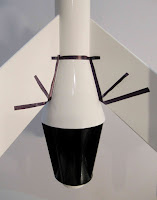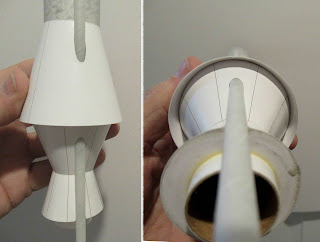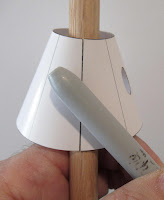The upper shroud (between the fins) is also black and will be painted afterwards.
With Florida Summer humidity, the gloss black dried flat on the shroud areas.
Sometimes you can polish up a humid dull finish to a shinier surface.
Some automotive polishing compound was applied and rubbed of with a Q-tip.
Any remaining white residue was brushed out with a chip brush.
Here's the Scotch tape mask on the upper shroud.
The rest of the fins and pods were covered with tape and plastic grocery bags.
I also covered the lower vanes area with a tape mask (not shown here) so it would remain polished and shiny. Sometimes overspray can dull a finish gloss.





















































